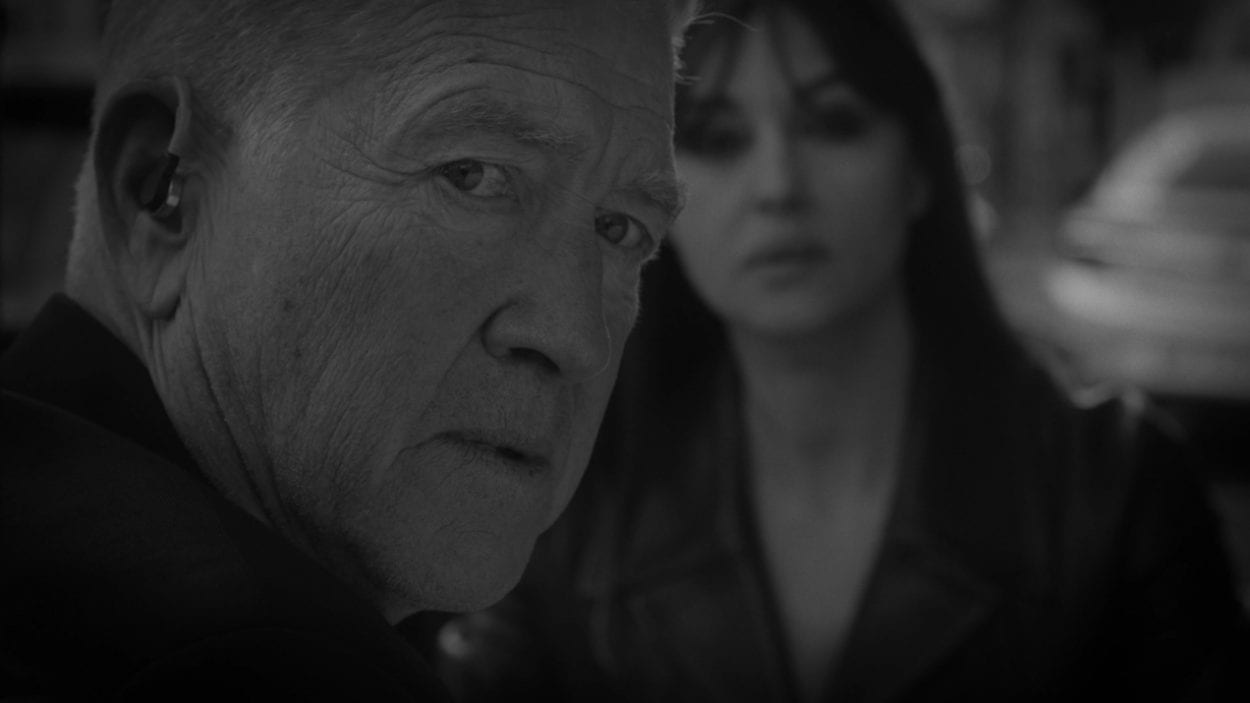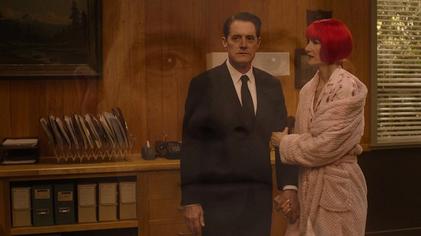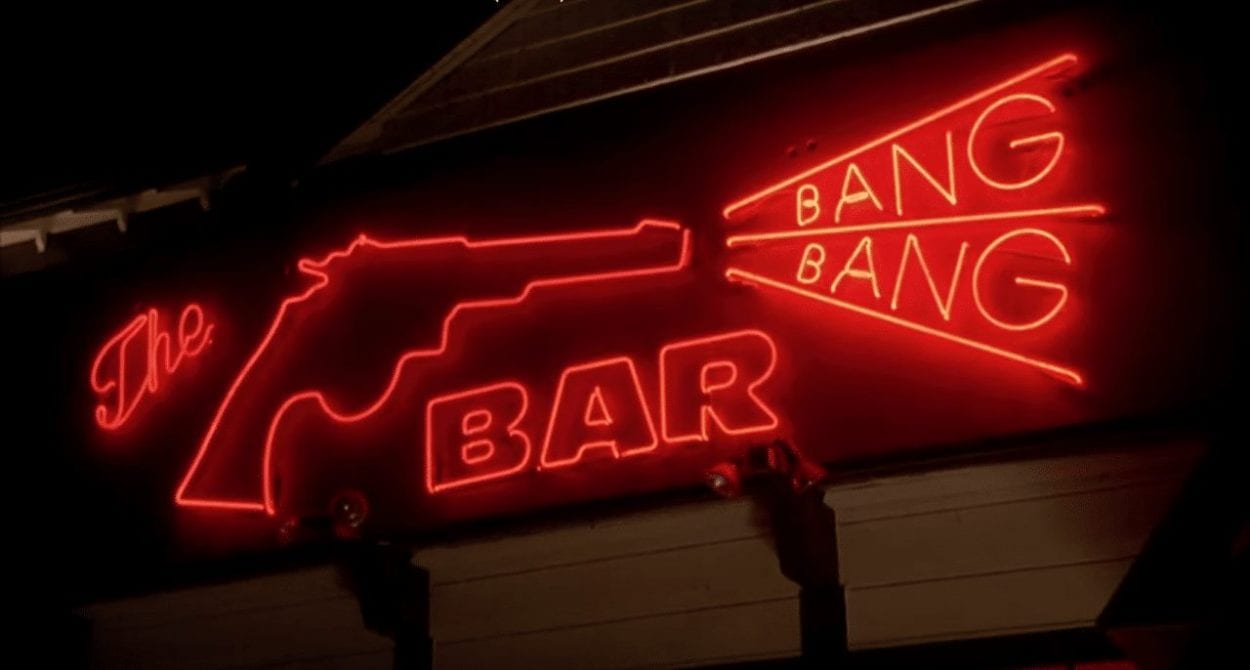Much like the question “How’s Annie?” in the original series, Twin Peaks: The Return posed a question that tantalised as much of its audience as it made it cry with frustration. “Who is the dreamer?” broke many hearts when uttered by Monica Bellucci, of all people, in Part 14 of the show.
This was partly because they knew (correctly) that the show would never provide a definite answer, but mainly because the idea of this wondrous town and these magical characters, so real in our hearts, being nothing but figments of a dreaming mind, was too much for us to bear. Even though fiction is the figment of a dreaming mind, there is a difference between a show being self-referential and the show itself, as presented to us, being self-aware. The idea of Twin Peaks being nothing more than a Bobby-In-The-Shower moment was depressing, to say the least.
A tease to the end, the show neither confirmed itself to be a dream or not; neither did it confirm who said dreamer is. There seems to be some sort of consensus between a portion of fans that Cooper is the dreamer, but even then, there is still dispute over the hows and whys.
Now: I’m not here to try to convince you of who the dreamer is. I will be working on the assumption that it’s Cooper who is indeed the dreamer, but I don’t expect you to agree with me. I also don’t claim to have any definite answers either. So, what am I presenting to you, dear readers?
Ever since John Thorne posited the idea in issue 5 of The Blue Rose that “Cooper’s mind – not his body – leaves the Red Room to inhabit and inform events in the outside world” [1], I have been drawn to the prospect of The Return being somehow the vision of Cooper, made visible for us to see. Rather than a dream, I aim to argue the word “dream” is used to describe a person’s subjective view of the world, and what we see in The Return is Cooper’s perception of the world around him after 25 years of entrapment in The Red Room.
A disclaimer: I’m not claiming this to be fact or the secret key to unlock the meaning of the show. This is me exploring an idea that I found exciting, and I hope you find it exciting too.
Let’s step into the dream, shall we?
The Universe’s Weaving
Back in Part 14, when Monica Bellucci asked us, “Who is the dreamer?,” she prefaced it with a quote, one very well known to David Lynch fans, being a quotation Lynch used to preface screenings of his last feature-length film, Inland Empire: “We are like the dreamer who dreams and then lives inside the dream.”

As we’ve reported before on this very site, this quote seems to have been obtained from Eternal Stories of The Upanishads, as translated by Thomas Egenes. A key volume of Hindu texts, the quote it contains seems at first glance to reference some sort of Creation myth, as if we are to take literally the idea that the world is a creation of a sleeping man in another world, one we suppose to be not a dream. But what story was this quote about the dreamer contained within? We need a little more context to judge the matter further.
The full quote is as follows:
“Look Balaki,” the king said. “Do you see that spider?”
“Yes,” said Balaki, “I see the spider moving along its web.”
“We are like the spider,” said the king. “We weave our life, and then move along in it. We are like the dreamer who dreams and then lives in the dream.
“This is true for the entire universe. That is why it is said, ‘Having created the creation, the Creator entered into it.’
“This is true for us. We create our world, and then enter into that world. We live in the world that we have created. When our hearts are pure, then we create the beautiful, enlightened life we have wished for.” [2]
There is enough to unpack here to suggest that the “we are like the dreamer” quote was not suggesting that the world of Twin Peaks was created by a dream–not in the traditional sense of the word “dream,” anyway.
The King refers to the Creator having entered into his creation after making it. The emphasis here is on the entering of the creation, not the creation itself. Therefore, it’s reasonable to assume that The Return is not playing out some standard Creation myth, but rather is asking us to look at who is entering the creation and why.
The King goes to say that we create our world and then enter it. We live in the world we have created. But if he’s not talking about creation, as in a Creation myth, then what does this mean? How do we create our own world? Luckily for us, the King is gracious enough to leave us one further clue to help us.
When our hearts are pure, then we create the beautiful, enlightened life we have wished for. Things become clearer when looked at through this lens. The King is arguing that our subjectivity “creates” the world for us subjectively in the way we live in it. What we bring to bear on the world, the world reflects back to us.
Perception is Creation
Perception is the key to “creation” here. Perhaps “rewriting the world” would be a better phrase to use in this context than “creating” it. Right or wrong, seeing is often believing, and what we perceive the world to be is often how we believe it is, the subjective made concrete by an error of belief.
Sure, there are some objective truths about the world that we can rely on. There is sky. There is ground. There are buildings. There are roads. Nobody, I’d imagine, would dispute these simple facts.
But the problem, if we can call it a problem, is that we experience these things subjectively, and these experiences shape our perceptions of what we believe the world is. We fall into the trap of believing what we feel is how it is.
Take for example those objective buildings I mentioned. Say we were living in a town, a town we did not have the money and resources to leave, even for a holiday. Say we hated the architecture of the buildings in the town, found them Brutalist, omnipresent, depressing. Allowing for the fact that we have access to media that allows us to see architecture in other parts of the world, we might still believe based on our day-to-day surroundings that the world is an ugly place and that there is no aesthetic beauty to be found. Clearly this is ridiculous, but for some people, the microcosm becomes a macrocosm. This is the danger of a perception becoming a concrete belief.
To Save and Be Saved
Take our own Dale Cooper. He has seen Laura redeemed and rewarded with happiness and angels at the end of Fire Walk With Me (admittedly The Return does throw the chronology of this moment into question). And yet, with his White Knight syndrome and his inability to resist a damsel in distress, he enters on a stubborn quest to save Laura from being killed in the first place, thus preventing such ethereal ecstasy from occurring.
When The Return first aired, I was momentarily of the opinion that Coop was trying to save Laura to save himself. If Laura had never been killed, he would never have had to visit Twin Peaks and would not have lost 25 years of his life to The Red Room, trapped in limbo whilst his darker self wreaked havoc on the world. Sure, denying Laura her redemption would be completely selfish. But it would be understandable in this context. Laura would get a chance to live again, and so would Coop.
But this was not Coop’s motivation, and it is his perception to blame. He is insistent that Laura was a victim, of both earthly and supernatural forces, and in his way, he is of course correct. She was a victim. But in his insistence on saving Laura, Coop is denying her agency, her choice to deny BOB and her father, to receive her redemption for her suffering from the angels. Ultimately, Laura chose, she acted, and she was rewarded for this. Coop has no right to choose for her.
What drives Coop is his desire to be the White Knight, that this damsel in distress needs a saviour to rescue her. Thus he sees women, as much as he loves them, as passive, vulnerable, and unable to act to save themselves. This is, of course, a narrow, reductive way of looking at a whole gender of people, and it is this perception that is his undoing.
For one, the universe won’t let him get his way, as evidenced by Carrie Page’s return to the Palmer house at the end of Part 18, and also by The Final Dossier, where Laura just went missing instead (and Cooper still had to come to Twin Peaks). And for two, he has potentially made things worse for Laura. He has given her an identity crisis of sorts by turning her, however unintentionally, into Carrie Page.

Not only that—and while I’m not making light of death in any way—Laura was possibly in a better place in the arms of the angels than being dragged back to Twin Peaks, with its shadowy men and shadowy desires. That it failed is incidental here. The fact is that Coop forced his perception of women onto Laura and tried to save her where she didn’t need saving. Cooper’s vision of the world brought his hubris to bear on the world, and the world reflected it back as confusion and incoherence.
Seeing Things Your Own Way
So then: What does this have to do with the question of the dreamer and the dream?
As outlined above, we all “dream” our own personal idea of the world. We all dream individually, and while there may be crossover in ways we see different things, we all experience the world subjectively and individually, the dream being the way we perceive the world. This perception is a dream because it is not “real,” being subjective to our understanding and feelings about the world. Thereby we create the world in our own image, or own mind, it is better to say.
There may be a Unified Field on a deeper level, quite possibly the level of The Red Room and the Fireman’s abode, where time does not seem to exist, not in the way we experience it. But down here on Earth, we all dream our own little dreams of how we believe reality to be.
So how does Cooper’s perception of the world impact the world of Twin Peaks as shown in The Return?
John Thorne has argued that, when Coop is forcibly ejected from The Red Room in Part Two, he is:
still physically in the Red Room but his mind has escaped and is now a grand observer of all that transpires in the outside world. Cooper’s mind has rejoined the world and become an omniscient presence capable of observing everything that transpires. He sees what is happening to Dougie in Las Vegas (and possibly acts to protect him); he watches events unfold in Buckhorn and delicately prompts Gordon Cole when necessary; he tracks the whereabouts of Mr. C, anticipating his next moves; he haunts the environs of Twin Peaks, bearing witness to the joys and sorrows of its residents. This is the Cooper whose face literally appears to watch events in the Sheriff’s station near the end of Part 17, the same Cooper who reminds us, “We live inside a dream.” In effect, Cooper becomes a surrogate audience. He sees everything we do. Cooper is the viewer. We are Cooper. [3]
The implication is clear. We are seeing Twin Peaks as Coop sees it, at the time that he is observing it. We are looking through his eyes, his point of view, as he flits from place to place, person to person, taking in the twists and turns of events surrounding his doppelganger and the folk of Twin Peaks.
But if this is true, and Cooper is the dreamer, then what of the dream?
The World According To Mind
If we have identified the “dream” as being the subjective way we look at the world, then everything we see when we watch The Return outside of The Red Room, Coop’s meeting with The Fireman at the very start and the events of Part 18, are depictions of Cooper’s perception of a world he is seeing for the first time in 25 years.
This explains the exaggerated, comic and absurd ways events are depicted in The Return, as if the “real” objective acts have been pulled out of shape and made abstract by the way Coop’s mind perceives them. Hence, the prolonged floor-sweeping, the disturbingly comic assaults of Ike the Spike, the unreality of the sick girl rising up as if a zombie back from the dead in the passenger seat of an impatient driver’s car. In each case and many more, the event in question has been exaggerated and made absurd by the eye of its beholder.
Why should this be so? We know the Dale of the original series to be a lovable eccentric, certainly not hallucinatory and disassociated. Why would his perceptions appear as distorted as they do?
Simply put, our Dale is a victim of his 25-year imprisonment in The Red Room. As a human and not an ethereal being, he is not designed for the timelessness or the supernatural abstractions The Red Room possesses. Prolonged exposure to such has dissociated his mind and way of thinking from the “standard” way of human thought.
Where Dale sees wrong or darkness in the world, now he overlays such sight with abstractions and absurdity to emphasise the severity of what he sees. Or maybe he just can’t process experiences properly anymore, and as such what he sees becomes distorted and misrepresented by a mind that can’t compute the data being entered into it.
Chances are Ike the Spike was really a comic if professional, business-like assassin. The sweeping may have gone on so long because Coop was trying to revive an association in his mind with the bartender of the Roadhouse, and it took time and effort to do so–hell, it might not have been a Renault behind the bar that night! That might just have been the association Coop’s struggling mind made, and thus this is what we saw.

As for the sick zombie-like girl in the car, chances are that Dale saw the boy with the gun, a disturbing sight, but by the time his mind had processed this, his consciousness had moved on to the impatient car, meaning that Coop’s abstract reaction to the darkness of the situation with the boy was overlaid onto the impatient driver instead, her rage exaggerated to the nth degree, and the sick girl beside her transformed into the ghoulish, haunting figure we saw. This might also explain why such a terrifying character is never referred to again; Coop’s mind has simply moved on to other sights and has left the girl behind (quite suitably, in its way, for a mind drawn to Buddhism).
The question remains, though: Why is Coop’s mind sent out into the world, and how he can appear in body, as himself, and as Dougie, and watch himself in the process?
The Red Room, Again and Again
Remember, it is quite clearly stated in Part 2 by the Evolution of The Arm: “you cannot leave until he comes back in,” he being Coop’s shadow self, his evil doppelganger, Mr C. The reason for this is two-fold. I believe The Arm is concerned that if our Coop confronts Mr C on the earthly plane and is defeated, they will be unable to force him back to The Red Room. He will be rogue forever on Earth. By trapping him back in The Red Room first, they can ensure the reintegration of the two sides of Coop and release him back into the world as a whole being.
I believe Cooper has lived this scenario many times. His appearances in The Red Room in Part 2 across from Phillip Gerard, whose sudden reappearance across from him via a sharp jump cut, after Coop is plunged into the darkness with The White Horse, implies that he is being shown a past cycle by Gerard to inform him that he keeps repeating the cycle of reintegration, only to fail by his stubborn insistence on trying to save Laura. It’s a lesson Coop never really learns, as we can tell by his actions in Parts 17 and 18.
But we can also infer this by his surprise when he is snapped back to his place in the chair by Gerard. Coop could not discern between past and future, could not disassociate himself from what he was being shown of the past, instead believing he was living it. Coop’s mind has never been able to adjust to the strange temporal laws of The Red Room, which seem to be, if not timeless, capable of accommodating vision of different parts of time at once, not so much non-linear as multi-linear.
It’s for this reason that The Evolution of The Arm tells Coop to “Go now!” after telling him he cannot leave until Mr C comes back in. The Arm knows from the cycles of the past that his doppelganger will send Coop out into the world for the stronger Mr C to destroy and vanquish, but that this will not happen and Coop will defeat Mr C. This is why Gerard coaches Coop on the cycles of the past (and also The Fireman), so that Coop won’t make the same mistakes concerning Laura once he is reintegrated with Mr C.
Strangely, Gerard seems to have forgotten this as he cries, “Something’s wrong!” But The Arm knows this is how it has to be to reintegrate the two Coopers, and so it comes to be. In the process, though, something strange (even for Peaks!) happens. Coop’s mind becomes separated from his body. Or more precisely, his subconscious does. As his body arrives back on the earthly plane, via electrical transmittance by plug socket, subconscious and body become separated, leaving the empty vessel of Dougie Jones (who really should get his own sitcom) and the subconscious mind to observe him.
Why subconscious and not his whole mind? Well, Coop’s mind as observer drifts from place to place undirected and observes events without impeding them, yet adding its own strange interpretations, perceptions, and abstract symbols onto what it sees. This is more in line with the subconscious mind than the conscious mind.
Also, when Coop, the good agent, the White Knight, comes back into being in the hospital (demonstrating nicely the difference between him and Mr C), he acts decisively, consciously, suggesting the conscious mind was still somewhere at play in Dougie but lay dormant due to the trauma of his transference back to the earthly plane. Also, in the same way, we possibly don’t realise the subconscious is at play until we dream, Coop is too busy trying to get to Twin Peaks to realise his subconscious is apart from him.
Appropriately, it is Twin Peaks that brings his body and his subconscious mind back together.
The Ideal World Is The Ideal Trigger
What is it that triggers Cooper’s conscious mind into realising his subconscious mind is without him? Well now that his conscious mind is back up and running, after the dormancy of Dougie, he begins to notice all is not as it should be. He was a damn fine agent, after all. Although he is disconnected from his subconscious, Coop still has an attachment to it on a fundamental level. He can see the perceptions and abstract symbols his subconscious mind is layering onto the world, and he realises what is occurring.
John Thorne describes the moment of realisation:
Cooper’s influence over events extends to Naido, who transforms into Cooper’s long-lost love, Diane. When Diane approaches Cooper she seems unfazed by her sudden appearance and wryly declares, “Cooper, the one and only.” This “idealized Diane” exists exactly the way Cooper wants her to be. She is poised and confident. She assures Cooper she “remembers everything” and passionately kisses him. Here, Diane is a perfect fit for Cooper’s romanticized happy ending. Cooper’s mind is creating the world the way he wishes it to be. But something is wrong. [4]
Cooper realises that he is missing a vital part of himself, that his subconscious, impacted by its time in The Red Room, is moving beyond perception into abstract distortions. This is why we see Coop’s face superimposed ethereally over the scene. This is the acknowledgment of Coop’s subconscious that it has influenced the world it is observing. “We live inside a dream,” says the superimposed Dale, and the recognition is complete. The body, the conscious mind, and the subconscious mind are reunited. I suggest here that the subconscious has retained some sort of memory of its previous cycles, in that Dale knows something is now supposed to happen but can’t remember what.
Can I explain how Coop, Gordon, and Diane are transported to the Great Northern basement, and by whom? Not quite. I really wish I could. But I will say Coop’s failure to save Laura now happens, and this occurs after Mr C is killed and returned to The Red Room, but is before the good Dale arrives back in The Red Room. Does the attempt to save Laura occur before he is reintegrated with his shadow self?
In any case, I believe the Cooper we see at the start of Part 18 has been reintegrated with his shadow self, and this is why we see the change in character. Coop seems colder, more assertive, more authoritative. I believe here that, while Coop has reintegrated with his shadow self, he has not got the balance right yet, with the scales leaning in the favour of Mr C. Dale is not truly whole until he gets this balance right, something he will never truly be able to do until he realises Laura does not need saving. This is the tragedy of Cooper and his hubris, the White Knight syndrome enslaving the man and corrupting his chance at a normal life.
Yes, Cooper is the dreamer. He knows himself to be such. But sometimes the dream can be much too domineering to wake up from. Hence, the cycle. The struggle. The endless Return. 2:53, again and again…
[1] Thorne, John. (2018, March). Time and Time Again: The Minds and Missions of Dale Cooper. The Blue Rose Magazine. (1)5.
[2] Egenes, Thomas and Reddy, Kumuda. Eternal Stories From The Upanishads. Delhi: Winsome Books India, 2009.
[3] Thorne, John. (2018, March). Time and Time Again: The Minds and Missions of Dale Cooper. The Blue Rose Magazine. (1)5.
[4] Thorne, John. (2018, March). Time and Time Again: The Minds and Missions of Dale Cooper. The Blue Rose Magazine. (1)5.






Interesting article. I don’t think the sentence should be taken literally. Nothing is to be taken literally in Lynch’s work. It is most surely influenced by his fascination for oriental culture. I don’t think it means Twin Peaks is a dream, at all. I find it a really silly interpretation. All realities in Lynch’s world can be seen as dream-realities, ours most of all. So the dreamer, I think, is a concept much higher than Cooper and the dream is much, much vaster than Twin Peaks.